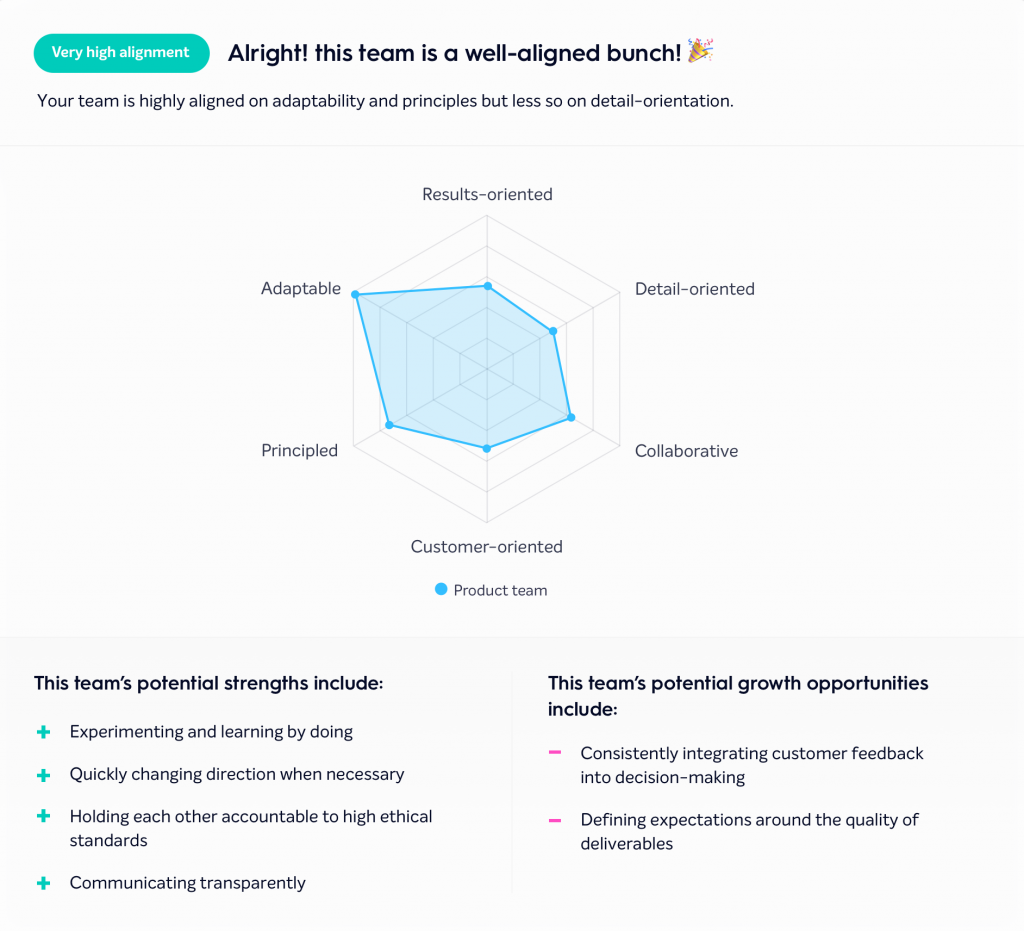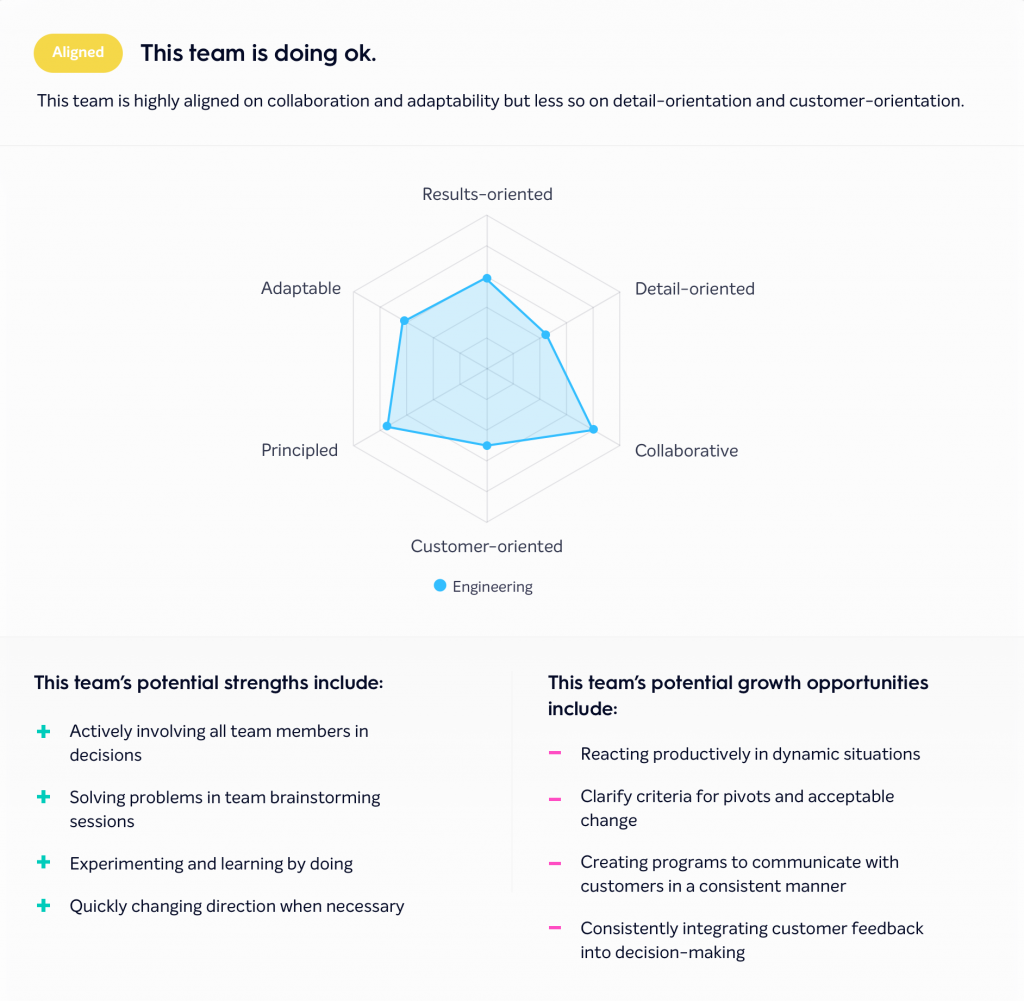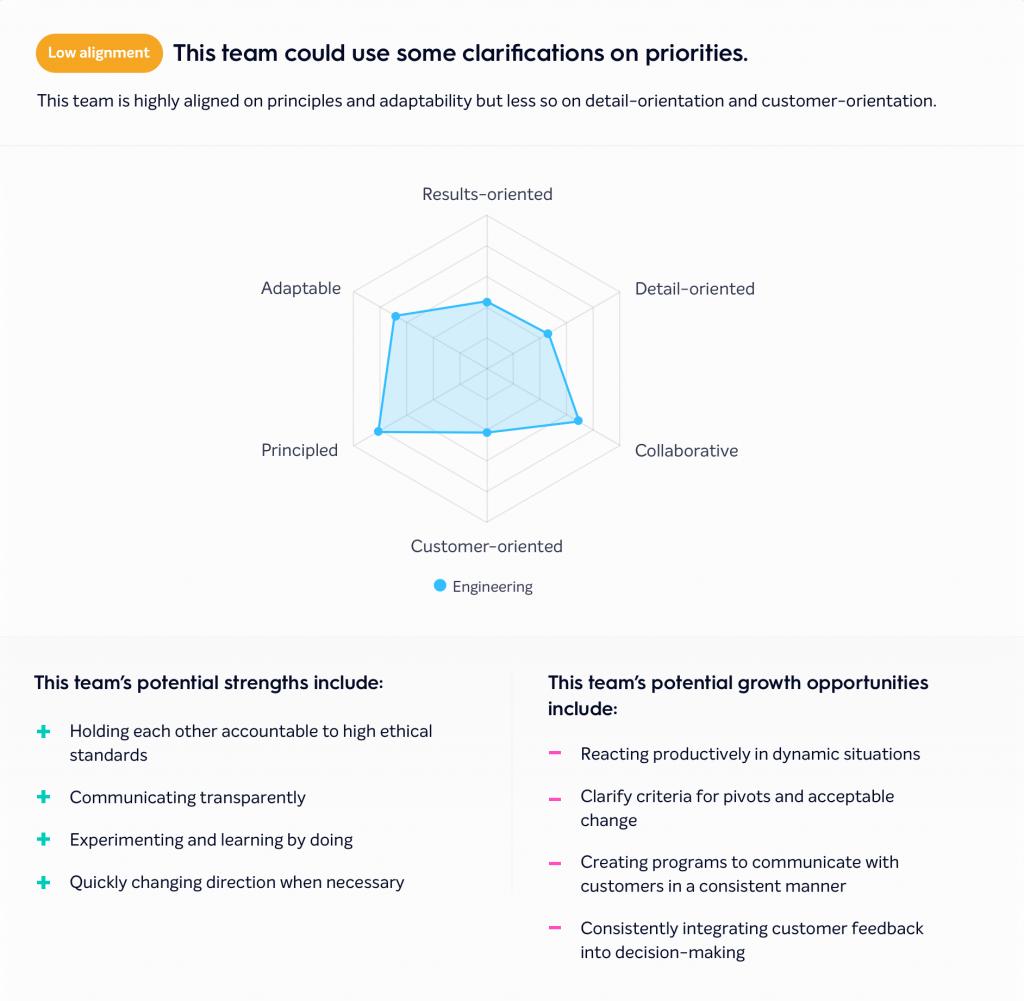So, at this point you’ve taken the Bunch assessment, and invited your team members to do the same. Consider this post your straightforward, yet comprehensive guide to understanding your Bunch team profile and making the most out of it. The results are in, and you’re looking at a graph something like the ones below and wondering how best to interpret it.
This part is easy: You scored either high, average, or low alignment, so we’re going to split this up into three sections. This way, whichever one you are, you can skip right to that use case. Keep in mind all three cases will include some positive feedback and constructive recommendations.
1. High alignment

Congratulations! Your team is on track and is already experiencing the benefits of cultural alignment. Even within this bracket there is always room for improvement. The path to improvement will look different depending on what your team is looking to achieve. If, for example, you’re aiming to create what Charles O’Reilly calls a culture of success (specifically in reference to the high-tech industries included in his study), and your team is aligned but low on adaptability, then you have some work to do.
You could start by checking out this video on creating a culture of success. The bottom line is that you’re doing great, but depending on your use case, one dimension could be more important to your success than another. Pick the top one or two dimensions that you want to build team alignment on (take a look at this list of specific behaviors that correspond to each one if you need inspiration), specify the positive results you want to achieve as a team, and start implementing changes to improve your dynamic. Here is an article to get you started, or help you keep up your momentum!
2. Average alignment

Your team is simply aligned. This is one of the coolest places to start! Allow me to explain: if you’re just starting to map your culture and measure growth, then being aligned means chances are you have some team members who are high on your team’s strongest norms and some that are a bit further away.
Now would be a great time to pull those team members into a meeting and discuss initiatives to help the team align on those priorities and unite behind a shared definition of success (here are some resources to get you started: how to build a better startup team, and how to preserve startup culture as a company grows).
In that meeting, and others, you could bring up the “potential growth opportunities” and “potential strenghts”, and discuss how they may be impacting productivity and team success.
3. Low alignment

Don’t panic! Low alignment doesn’t mean you’re bad at hiring or that your team isn’t competent. It just means there’s room for tremendous growth in cultural alignment, and therefore in company success. You’re standing at the beginning of an epic quest, and we’re about to give you some magical assistance in the form of tools, success cases, and action steps.
First, take a look at your team’s “potential strengths.” If you can, translate this into a list of examples, things your team does really well. Then take a look at potential growth opportunities and do the same. Think about how an aligned culture could help mitigate these conflict areas. Next, take a look at the distribution of norms (this is the graph that looks a bit like a spider web.) Below is a chart showing what each of these norms means, and the benefits of high alignment on each. Ask yourself which behaviors your team needs to display in order to successfully execute and deliver on your business’ strategy. Then, define the top one or two dimensions important to your team and the specific behaviors necessary to move your team forward.

With this information, you can start to envision your team’s cultural targets (in fact, a Forbes article recently explained that “it’s extremely helpful to agree on a common definition for culture before you start working on it”). Once you have an idea of the direction you want to go, that’s the perfect time to start transparent conversations with your team on why culture is important, where it is going, and how you’re planning to get there together.
Once you’re feeling good about your new direction, try implementing some culture initiatives (Fun fact: the faster people are engaged in the process [of shaping culture], the higher the probability the culture will shift), and integrating Bunch into your hiring process (more info on that here).
That’s it!
Now you should be prepared for anything your team profile may throw at you. Hopefully you found this post helpful and informative. We’d love to hear your feedback in the comments below! Also don’t forget to reach out if there’s a topic or a question you’d like us to address on this blog.




